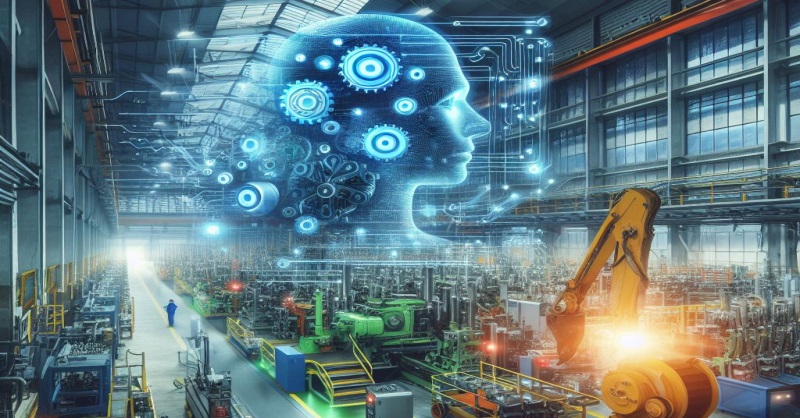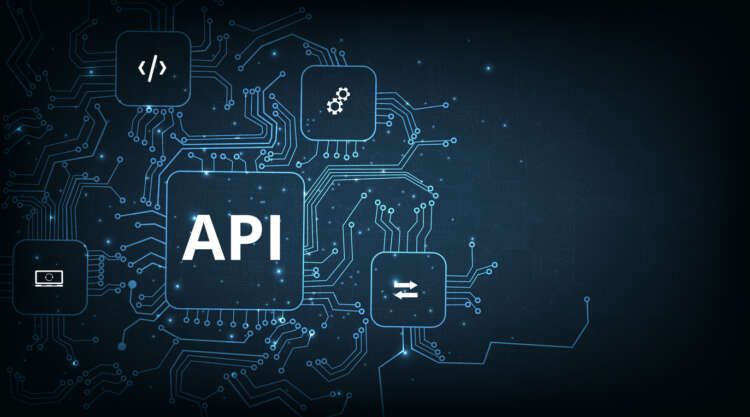
As we progress through 2025, the convergence of artificial intelligence, quantum computing, extended reality, and autonomous systems is creating unprecedented opportunities for innovation and disruption. The smart technology landscape is evolving at breakneck speed, fundamentally transforming how we work, live, and interact with the digital world. Understanding these emerging trends is crucial for organizations seeking to maintain competitive advantage and individuals preparing for the future.
The Intelligence Revolution Continues
Artificial intelligence has moved beyond experimental applications to become the backbone of smart technology infrastructure. The emergence of large language models with multimodal capabilities, advanced computer vision systems, and sophisticated reasoning engines is enabling unprecedented levels of automation and intelligence across industries.
What sets 2025 apart is the democratization of AI capabilities through accessible platforms and APIs, allowing smaller organizations and individual developers to leverage cutting-edge intelligence without massive infrastructure investments. This democratization is accelerating innovation and creating new possibilities for smart applications across diverse sectors.
Edge AI and Distributed Intelligence
Edge computing has matured to support sophisticated AI workloads directly on devices, reducing latency and enabling real-time intelligent responses. Smart cameras can perform complex image analysis locally, autonomous vehicles make split-second decisions without cloud connectivity, and IoT devices exhibit intelligent behavior even in disconnected environments.
This shift toward distributed intelligence is particularly significant for applications requiring immediate responses, privacy-sensitive operations, and environments with limited connectivity. Manufacturing facilities, healthcare institutions, and smart cities are leveraging edge AI to create more responsive and resilient systems.
Quantum Computing Enters Commercial Reality
Quantum computing has reached a pivotal moment in 2025, with the first practical commercial applications beginning to demonstrate clear advantages over classical computing approaches. While still in early stages, quantum systems are showing promise in optimization problems, cryptography, materials science, and complex system modeling.
Hybrid Quantum-Classical Systems
The most promising developments involve hybrid systems that combine quantum and classical computing resources to solve specific problem domains. Financial institutions are exploring quantum algorithms for portfolio optimization, pharmaceutical companies are leveraging quantum simulation for drug discovery, and logistics organizations are investigating quantum approaches to complex routing challenges.
Cloud-based quantum computing services have made these capabilities accessible to organizations without quantum hardware investments, enabling experimentation and early adoption across diverse industries.
Extended Reality Becomes Mainstream
The convergence of virtual reality (VR), augmented reality (AR), and mixed reality (MR) technologies has created compelling extended reality (XR) experiences that are finally achieving mainstream adoption. Improved hardware, more intuitive interfaces, and killer applications across education, training, entertainment, and collaboration are driving unprecedented growth in XR adoption.
Enterprise XR Applications
Organizations are leveraging XR technologies for remote collaboration, immersive training programs, virtual product demonstrations, and enhanced customer experiences. Manufacturing companies use AR for assembly guidance and maintenance procedures, healthcare institutions employ VR for surgical training and patient therapy, and educational organizations create immersive learning environments that enhance comprehension and engagement.
The development of lightweight, high-resolution displays and improved spatial tracking capabilities has eliminated many of the technical barriers that previously limited XR adoption in professional environments.
Social and Cultural Implications
Beyond technical applications, XR technologies are reshaping social interactions and cultural experiences. Virtual concerts, immersive art exhibitions, and collaborative gaming environments are creating new forms of shared experiences that transcend physical limitations.
Autonomous Systems Reach Maturity
Autonomous vehicles, drones, and robotic systems have achieved new levels of sophistication and reliability in 2025. Advances in sensor technology, machine learning algorithms, and real-time processing capabilities have enabled autonomous systems to operate safely and effectively in complex, dynamic environments.
Urban Autonomous Infrastructure
Smart cities are implementing comprehensive autonomous infrastructure that includes self-driving vehicles, autonomous delivery systems, and intelligent traffic management. These systems work together to optimize transportation efficiency, reduce emissions, and improve urban quality of life.
The integration of autonomous systems with existing infrastructure requires sophisticated coordination and communication protocols that enable different autonomous agents to work together harmoniously.
Industrial Automation Evolution
Manufacturing facilities are deploying increasingly sophisticated autonomous systems that can adapt to changing conditions, optimize operations in real-time, and collaborate seamlessly with human workers. These systems combine advanced robotics, AI-driven decision making, and sophisticated sensor networks to create highly flexible and efficient production environments.
Biotechnology and Digital Convergence
The intersection of biotechnology and digital technology is creating revolutionary possibilities for healthcare, agriculture, and environmental management. Digital biology platforms leverage AI and machine learning to accelerate biological research, while biocomputing systems explore the use of biological components for information processing.
Personalized Medicine and Digital Health
Wearable devices, implantable sensors, and advanced diagnostic tools are enabling unprecedented levels of health monitoring and personalized treatment. AI systems analyze continuous health data streams to predict health issues, optimize treatment protocols, and provide personalized health recommendations.
Digital therapeutics and AI-powered mental health applications are expanding access to healthcare services while providing more effective and personalized treatment approaches.
Sustainable Technology Innovation
Environmental concerns are driving significant innovation in sustainable technology solutions. Smart energy systems leverage AI and IoT to optimize renewable energy generation and consumption, while advanced materials science is creating more efficient and environmentally friendly technologies.
Circular Economy Technologies
Smart technology is enabling new approaches to resource management and waste reduction. AI-powered systems optimize recycling processes, blockchain technologies track material flows and provenance, and IoT sensors monitor environmental conditions to optimize resource usage.
Carbon capture and utilization technologies are becoming more sophisticated and economically viable, while smart grid systems enable more efficient integration of renewable energy sources.
Privacy-Preserving Technologies
Growing concerns about data privacy and security are driving innovation in privacy-preserving technologies. Homomorphic encryption, federated learning, and differential privacy techniques enable organizations to leverage data insights while protecting individual privacy and sensitive information.
Zero-Trust Security Architectures
Security paradigms are shifting toward zero-trust architectures that assume no implicit trust and verify every access request. Smart technology systems are incorporating advanced authentication, continuous monitoring, and adaptive security measures that respond to evolving threats in real-time.
Decentralized identity solutions are giving individuals more control over their personal data while enabling secure and efficient identity verification across different platforms and services.
Human-AI Collaboration Models
The most significant trend shaping 2025 is the evolution of human-AI collaboration models that leverage the unique strengths of both human intelligence and artificial intelligence. Rather than replacing human capabilities, smart technologies are augmenting human decision-making, creativity, and productivity.
Augmented Intelligence Applications
Professionals across industries are using AI-powered tools to enhance their capabilities and achieve better outcomes. Doctors leverage AI for diagnostic assistance, designers use AI for creative inspiration and rapid prototyping, and analysts employ AI for data processing and insight generation.
The key to successful human-AI collaboration lies in designing systems that understand human context, preferences, and limitations while providing appropriate support and augmentation.
Future Workforce Implications
The rapid advancement of smart technologies is reshaping workforce requirements and creating new categories of jobs while transforming existing roles. Organizations must invest in comprehensive reskilling and upskilling programs to help workers adapt to technology-augmented environments.
Skills for the Smart Technology Era
The most valuable skills in 2025 combine technical competency with uniquely human capabilities such as creativity, emotional intelligence, and complex problem-solving. Workers who can effectively collaborate with AI systems while bringing human insight and judgment will be in highest demand.
Continuous learning and adaptability have become essential characteristics for career success in rapidly evolving technology landscapes.
Global Technology Governance
The increasing impact of smart technologies on society is driving new approaches to technology governance and regulation. International cooperation on AI safety, privacy protection, and ethical technology development is becoming increasingly important as technologies transcend national boundaries.
Ethical AI Development
Organizations are implementing comprehensive ethical AI frameworks that address bias, fairness, transparency, and accountability in AI system development and deployment. These frameworks ensure that smart technologies serve broad social interests while minimizing potential negative impacts.
Looking Ahead: Preparing for Tomorrow
The smart technology trends shaping 2025 represent just the beginning of a larger transformation that will continue to accelerate in coming years. Organizations and individuals who understand these trends and proactively adapt to leverage them will be best positioned for success in an increasingly digital and intelligent world.
Success in this environment requires not just technical adoption but also cultural adaptation, strategic thinking, and commitment to responsible innovation that benefits society as a whole.
Conclusion
The smart technology landscape of 2025 is characterized by unprecedented convergence, democratization, and real-world impact. From AI and quantum computing to XR and autonomous systems, these technologies are not just changing how we work and live—they're redefining what's possible.
The organizations and individuals who thrive in this environment will be those who embrace continuous learning, prioritize ethical considerations, and focus on creating value for customers and society. The future belongs to those who can navigate complexity, leverage intelligent systems, and maintain the human elements that make technology truly meaningful.
As we continue through 2025 and beyond, staying informed about these trends and their implications will be essential for anyone seeking to understand and participate in our rapidly evolving technological landscape.



